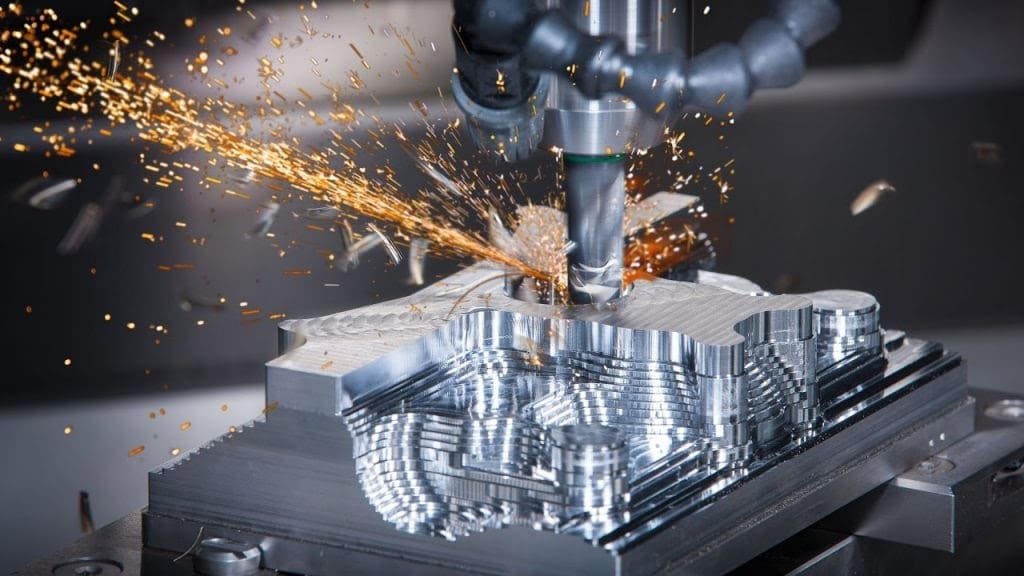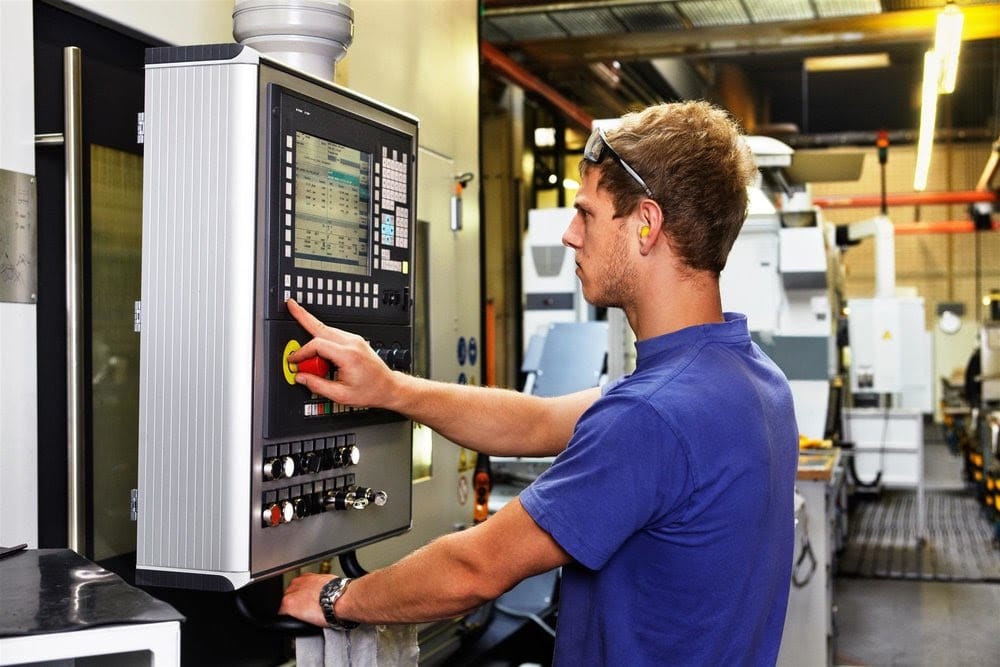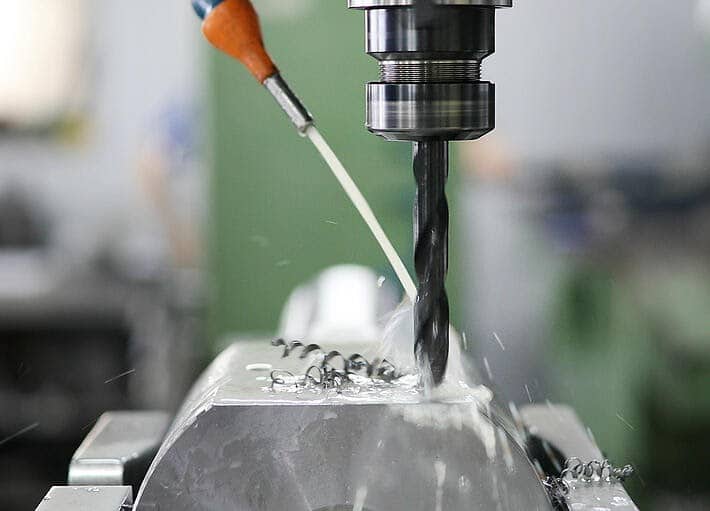The term CNC machining is commonly used in industrial and manufacturing applications. Still, what exactly does the acronym CNC mean, and what is a CNC machine? The three letters stand for “computer numerical control,” and CNC machining is a subtractive manufacturing procedure that utilizes computerized controls and machine tools to eliminate layers of material from the stock piece (known as the blank, or the workpiece) and produce the desired custom-designed part. The subtractive machining processes like CNC machining service, are essentially different than the additive manufacturing processes (3D Printing) and formative manufacturing processes (injection molding).
This manufacturing process is suitable for a wide range of materials, including plastics, metals, glass, foam, and composites. It finds applications in various industries, such as automotive, aerospace, military and defense, transportation, and many more. Speaking of the machine itself, the CNC machine is a programmable machine that is fully capable of autonomously performing the operations of CNC machining.
The automated nature of CNC machinery allows the production of high precision, high accuracy, and cost-effective CNC parts in different production runs. Read through our article to understand the full cycle of the CNC machining process, and the different types of CNC operations available to produce your required parts and components.

The Full Cycle Of CNC Machining
As mentioned in the intro, CNC machining is a manufacturing procedure that utilizes computerized controls to operate the machine and cutting tools that shape the stock material into custom parts and designs. Even though the CNC machining process provides different operations and capabilities, the process’s fundamental principles remain the same throughout all of them. The elementary CNC machining process includes the following stages:
- Design of the CAD model
- Converting the CAD file to a CNC program
- Preparing the CNC machine
- Executing the machining operation
Design Of The CAD Model
The process begins with the creation of a 2D vector or 3D solid part CAD design. The CAD (computer-aided design) software makes it possible for manufacturers and designers to come up with a model or render their desired parts and products together with the imperative technical specifications, like dimensions and geometries.
The designs for CNC machined parts and components are solely restricted by the capabilities and inabilities of the CNC machinery and its tools. For instance, most CNC machine tooling is cylindrical, so the part geometries via the CNC machining procedure are limited as the tools can only create curved corner sections.
Besides, the tooling design, the properties of the materials that are machined, and the work hold capabilities of the machine can further restrict the design possibilities like minimal part thickness, maximum size, and the inclusion of complex internal cavities and features. When the CAD design is ready, the designer should export it into a CNC-compatible file format, like STEP or IGES.
Converting The CAD File To A CNC Program
Once formatted, the CAD design should run through a program, a CAM software, to extract the part geometry and to generate a digital programming code that will control the CNC machine and manipulate the tooling to produce the desired CNC part or component.
CNC machines operate on several programming languages like G-code and M-code. G-code is the most popular CNC programming language and controls when, where, and how the machine tools move – when to turn on and off, how fast to move to a specified location, what paths to take, etc.
The miscellaneous function code, or the M-code, controls the auxiliary functions of the CNC machine, like automating the replacement and removal of the machine cover at the start and the end of production. When the CNC program is generated, the CNC operator loads it into the CNC machine.
Preparing The CNC Machine
Before the CNC operator runs the program, they have to prepare the CNC machine for operation. This includes placing the workpiece into the machine, onto the machinery spindles, or into the machine vises or similar work holding devices, then attaching the adequate tooling like drill bits, mills, and other machine components. When the machine is finally set up, the CNC operator can run the CNC program.
Executing The Machining Operation
The CNC program gives instructions to the CNC machine by submitting machine commands that will dictate the tooling’s behaviors and actions to the machine’s integrated computer. The initiation of the program prompts the CNC machinery to begin the CNC machining procedure. The program guides the machine throughout the process as it executes the operations to produce the desired CNC part, component, or product.

Types Of CNC Operations
CNC is a manufacturing process used by many industries, including aerospace, construction, agriculture, automotive, and capable of producing a broad range of products like automobile frames, airplane engines, garden tools, and many more. CNC machining encompasses several different computer-controlled operations, including mechanical, electrical, chemical, and thermal processes. The most common mechanical CNC operations include:
- Drilling
- Milling
- Turning
Drilling
CNC drilling is a machining process that employs multi-point drill bits to generate cylindrical holes in the workpiece. The machine essentially feeds the rotating drill bit perpendicularly to the plane of the workpiece’s surface. The process creates vertically-aligned holes with the same diameters to the diameter of the drill employed. On the other hand, angular drilling operations can also be carried out via dedicated machine configurations and work-piece holding devices. Other operational masteries of CNC drilling include countersinking, counterboring, tapping, and reaming.

Milling
CNC milling is another machining process. This one employs rotating multipoint cutting tools to eliminate material from the workpiece. With CNC milling, the CNC machine feeds the workpiece to the cutting tool in the same direction as the cutting tool’s rotation. On the other hand, in manual milling, the machine feeds the workpiece on the contrary direction to the tool’s rotation. Operational masteries of the CNC milling procedure include face milling, cutting different types of cavities into the workpiece, and peripheral milling.
Turning
Turning is the third machining process of CNC machining. CNC turning employs single-point cutting tools to dislocate material from the spinning workpiece. The CNC machine feeds the cutting tool in a linear motion along the rotating workpiece’s surface, thus removing material around the circumference until the coveted diameter is achieved. This process is used to produce cylindrical parts with internal and external features, like tapers, slots, and threads. Operational capabilities of CNC turning include facing, boring, thread cutting, and grooving.
Final Words
With CNC machining being one of the most critical functions of the manufacturing sector, without the high-tech capabilities unique to CNC machines, a considerable part of the components seen on everyday household items wouldn’t be produced. We outlined the full cycle of CNC machining, and the three basic types of CNC operations, so we can help manufacturers and owners of machine shops make an informed decision when deciding if CNC machining is the optimal solution for their specific manufacturing application.
